5 Exercises You Think You Need—but Don't
Give up crunches—for good! Let these fitness pros help you find a more effective alternative for those and other exercises.
By Corrie Pikul
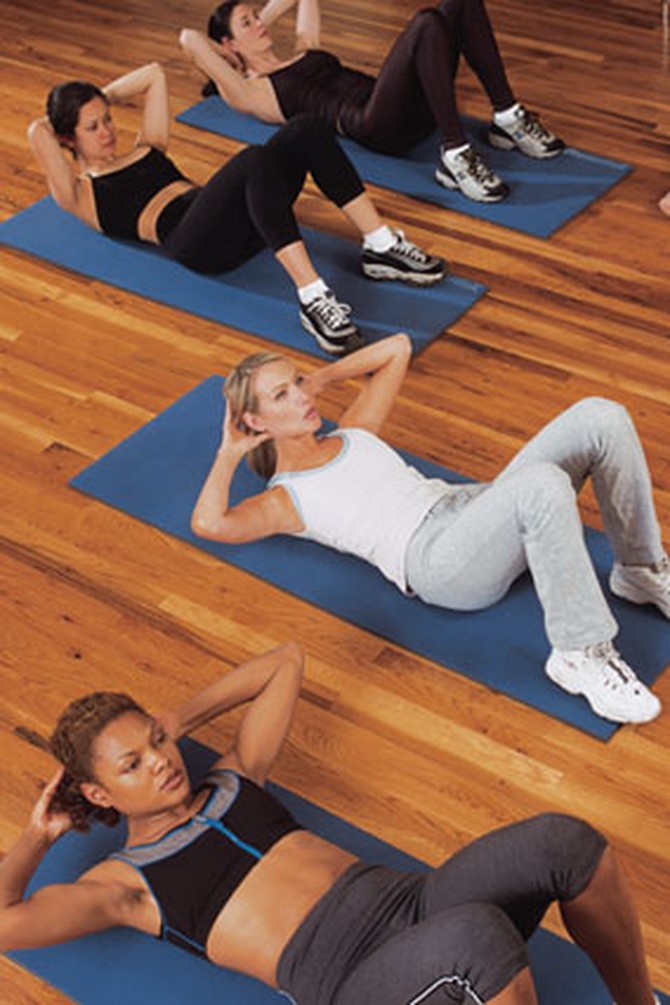
Photo: Thinkstock
You Think You Need Crunches...
But They Could Hurt Your Back
But They Could Hurt Your Back
Reality TV shows like MTV's Jersey Shore show how crunches can ripple the abs, but it wasn't until the last decade or so that we've fully understood what they do to our spines. "They're really hard on the discs," says Dr. Michael R. Bracko, an exercise physiologist and certified strength and conditioning specialist in Alberta, Canada. "Imagine that the discs are like jelly donuts stacked in between each vertebra," he says. "If you repeatedly flex the spine by doing crunches, it could cause the disks to rupture." That's a situation we'd like to avoid.
Better: Planks. "The best way to work the core is to keep the spine in a neutral position," says Bracko. "Planks work the rectus abdominis as well as the obliques, which help stabilize you."
How to Do Them
- Start in a modified push-up position, but instead of keeping your arms straight, your elbows should be on the floor.
- Your back should be straight, your neck long, legs straight behind you. Make sure your bottom doesn't sag below your hips.
- Hold this position for 10 to 30 counts; then relax for one minute.
- Repeat three times.
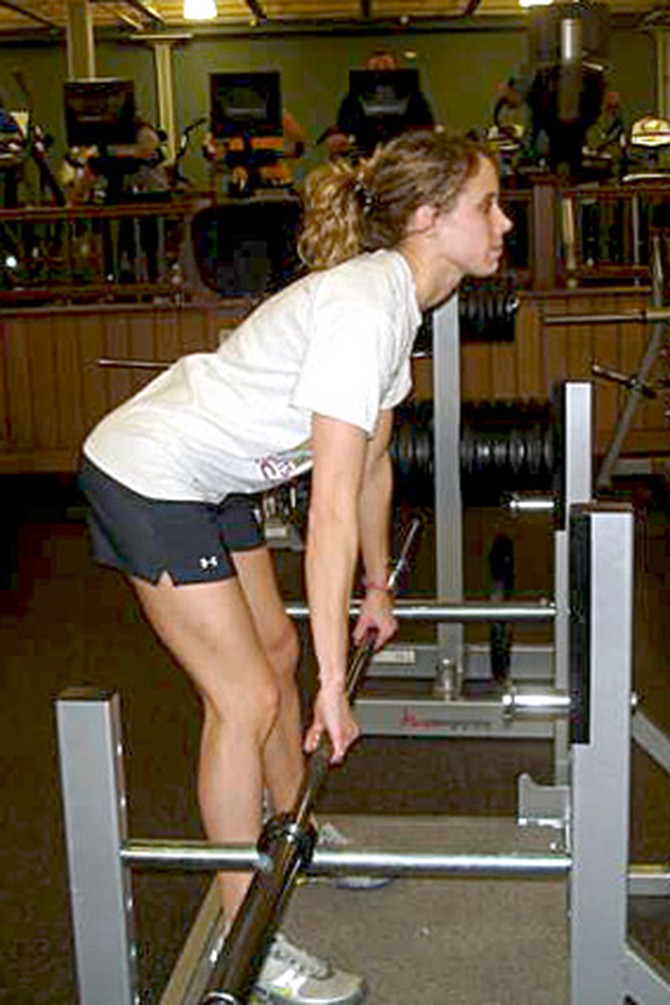
Photo: Inspire Training Systems
You Think You Need Straight-Leg Dead Lifts...
But You Can Leave Them to the Pros
But You Can Leave Them to the Pros
You've probably seen this exercise touted in fitness magazines as a way to sculpt your glutes. The problem is that "there's a lot of potential for mistakes," says Bracko. Bending forward with straight legs puts immense pressure on the invertebral discs. And while you're supposed to use your hamstrings to pull you up, many people lift with their back, which can lead to a herniated disc.
Better: Bird dogs. "This exercise is great for your butt and hamstring, with the added bonus of working the muscles around the spine," says Bracko.
How to Do Them
- Start on all fours, with your hands under your shoulders and knees under your hips.
- Extend your right arm straight out in front of you and your left leg out behind you.
- Raise your arm to shoulder height. At the same time, straighten your left leg and raise it to hip height.
- Hold for one count and release.
- Do 10 reps. Then switch to the left arm and right leg.
- Repeat three times.
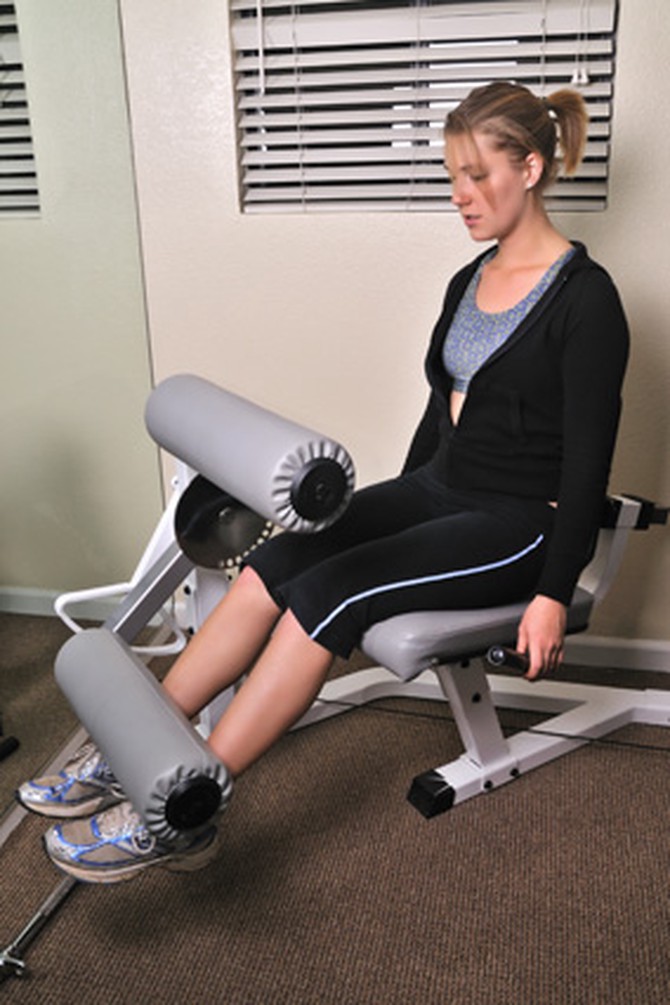
Photo: Thinkstock
You Think You Need Leg Extensions...
But They're Best for Those Recovering from Knee Injuries
But They're Best for Those Recovering from Knee Injuries
The current trend in fitness is to focus on "functional exercises" that mimic the movements we use in our daily lives. When's the last time you sat at your desk and tried to lift files with your ankles? That's one of the reasons "leg extensions have become a maligned exercise by many industry professionals," says Neal I. Pire, an exercise physiologist and fellow of the American College of Sports Medicine. The other reason is that this machine isolates the quadriceps. Pumping the quads while neglecting muscles like the hamstrings can lead to strain. Outside of the rehab clinic, "many people would say this exercise is a poor choice," says Pire.
Better: Lunges. "They require balance, which helps work muscles in the pelvis as well as the legs," says Pire.
How to Do Them
- Start by standing with your feet shoulder width apart, your hands behind your head, squeezing your shoulder blades back.
- Step forward and bend your knee until your thigh is parallel to the floor. Straighten the leg and return to the starting position.
- Repeat with the opposite leg.
- Do 12 lunges, six on each leg.
- Once you master the legs, try doing the lunges while holding a 5- or 7.5-pound dumbbell in each hand.
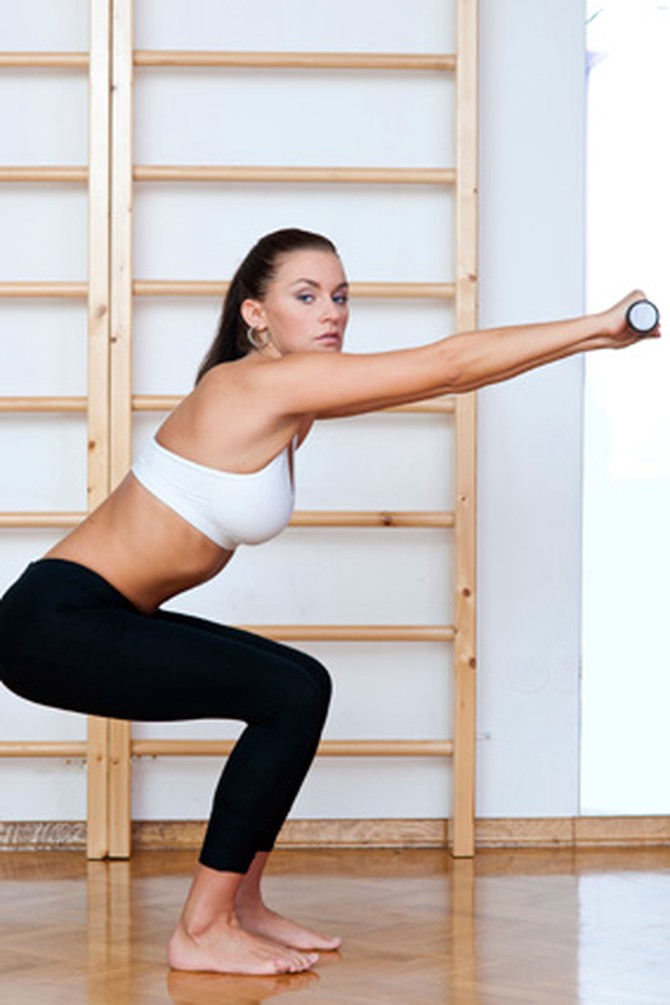
Photo: Thinkstock
You Think You Need the Squatting Dumbbell Front Raise...
But This Is a Combination of Two Exercises
But This Is a Combination of Two Exercises
Although putting these two moves together seems like a smart way to multitask, the combo can throw off your balance and hasten fatigue. If you're wobbly and out of control, you'll do both exercises wrong and may also strain muscles in your neck and back.
Better: Dumbbell front raises. Then squats. Separately. Be aware that, due to physics, "the long lever of your arm makes the weight of the dumbbell feel even heavier than it is," says Pire.
How to Do Them
- Start with a 1- to 2-pound weight in each hand. Lift one arm at a time in front of you to shoulder height, keeping it straight.
- Lower your arm back to the starting position.
- Repeat with the other arm.
- Make sure that you can do 10 to 12 controlled reps in good form (five to six with each arm) without pain before moving up to a heavier weight.
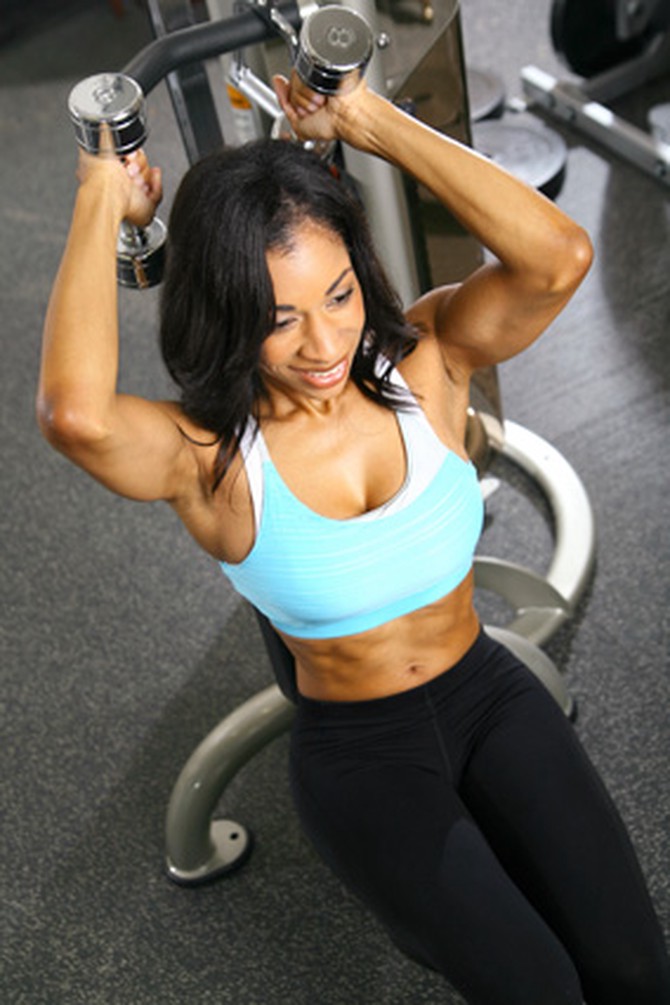
Photo: Thinkstock
You Think You Need Tricep Extensions...
But They Require More Flexibility Than Many of Us Have
But They Require More Flexibility Than Many of Us Have
To do this exercise correctly, you need to be able to reach behind your back, with your upper arms close to your ears and your elbows pointed straight up in the air. Does this hurt your neck? That could be because hunching over your computer all day has made your back stiff and inflexible, says Jennifer Cassetty, an American College of Sports Medicine fitness specialist and a certified personal trainer in Manhattan. "Many people don't have the range of movement and shoulder flexibility to properly execute tricep extensions," she says.
Better: Tricep push-ups. "They work triceps as well as the chest, shoulders and biceps," says Cassetty.
How to Do Them
- Lay flat on the ground with your hands under your shoulders and your elbows right by your sides.
- Push yourself up, focusing on your triceps. Beginners will probably only be able to come up to their knees. If you have the strength, push up to your toes. Try not to let your bottom sag, as this puts pressure on your lower back.
- Fully extend your arms without locking your elbows (a common mistake).
- Return to the starting position for full range of motion.
- Start with two sets of 10 and work up to three sets of 15.
Published 08/26/2011
As a reminder, always consult your doctor for medical advice and treatment before starting any program.

